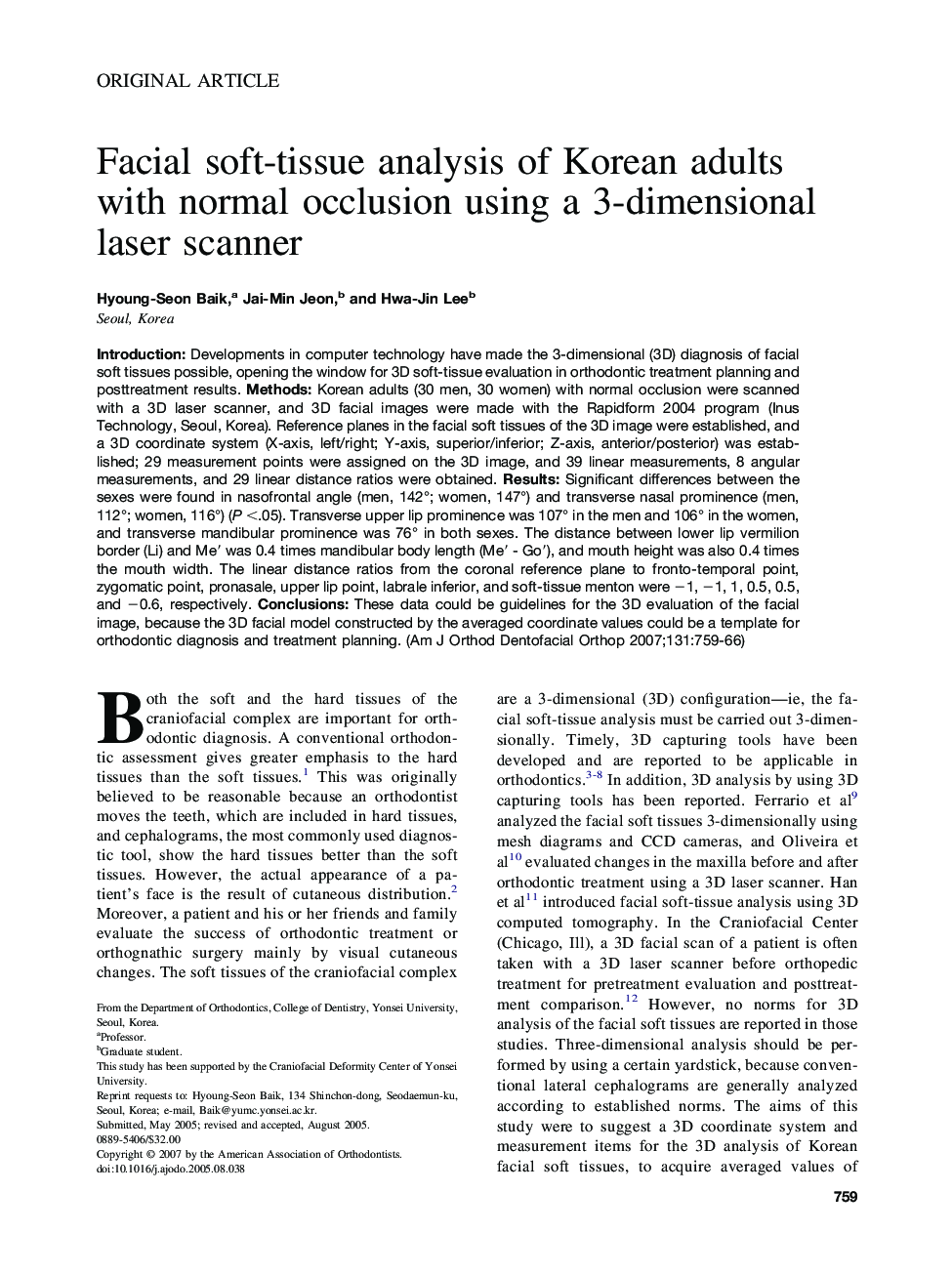| Article ID | Journal | Published Year | Pages | File Type |
|---|---|---|---|---|
| 3120413 | American Journal of Orthodontics and Dentofacial Orthopedics | 2007 | 8 Pages |
Introduction: Developments in computer technology have made the 3-dimensional (3D) diagnosis of facial soft tissues possible, opening the window for 3D soft-tissue evaluation in orthodontic treatment planning and posttreatment results. Methods: Korean adults (30 men, 30 women) with normal occlusion were scanned with a 3D laser scanner, and 3D facial images were made with the Rapidform 2004 program (Inus Technology, Seoul, Korea). Reference planes in the facial soft tissues of the 3D image were established, and a 3D coordinate system (X-axis, left/right; Y-axis, superior/inferior; Z-axis, anterior/posterior) was established; 29 measurement points were assigned on the 3D image, and 39 linear measurements, 8 angular measurements, and 29 linear distance ratios were obtained. Results: Significant differences between the sexes were found in nasofrontal angle (men, 142°; women, 147°) and transverse nasal prominence (men, 112°; women, 116°) (P <.05). Transverse upper lip prominence was 107° in the men and 106° in the women, and transverse mandibular prominence was 76° in both sexes. The distance between lower lip vermilion border (Li) and Me′ was 0.4 times mandibular body length (Me′ - Go′), and mouth height was also 0.4 times the mouth width. The linear distance ratios from the coronal reference plane to fronto-temporal point, zygomatic point, pronasale, upper lip point, labrale inferior, and soft-tissue menton were −1, −1, 1, 0.5, 0.5, and −0.6, respectively. Conclusions: These data could be guidelines for the 3D evaluation of the facial image, because the 3D facial model constructed by the averaged coordinate values could be a template for orthodontic diagnosis and treatment planning.
